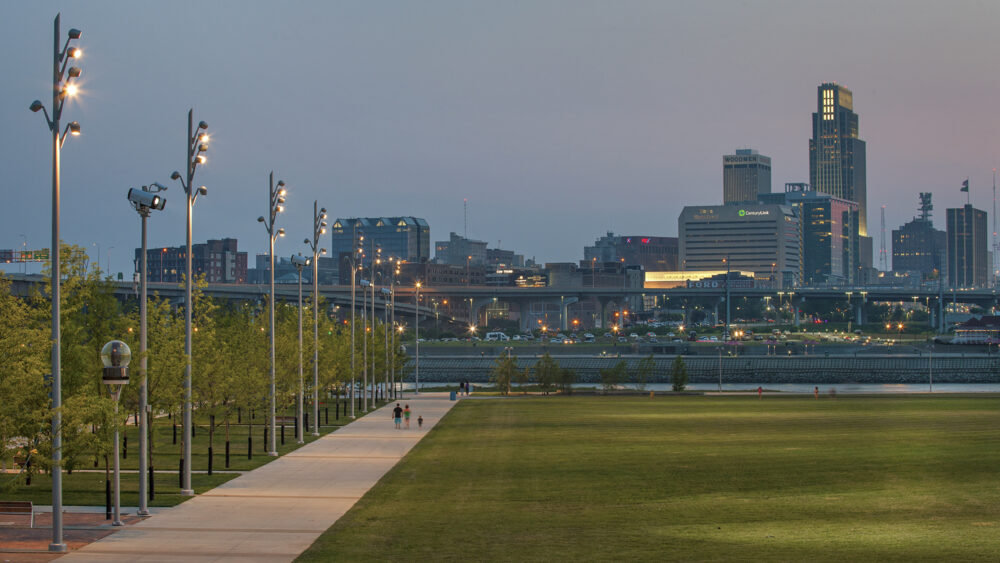
汤姆哈娜凡滨河公园
美国爱荷华州康瑟尔崖
 Sasaki
Sasaki
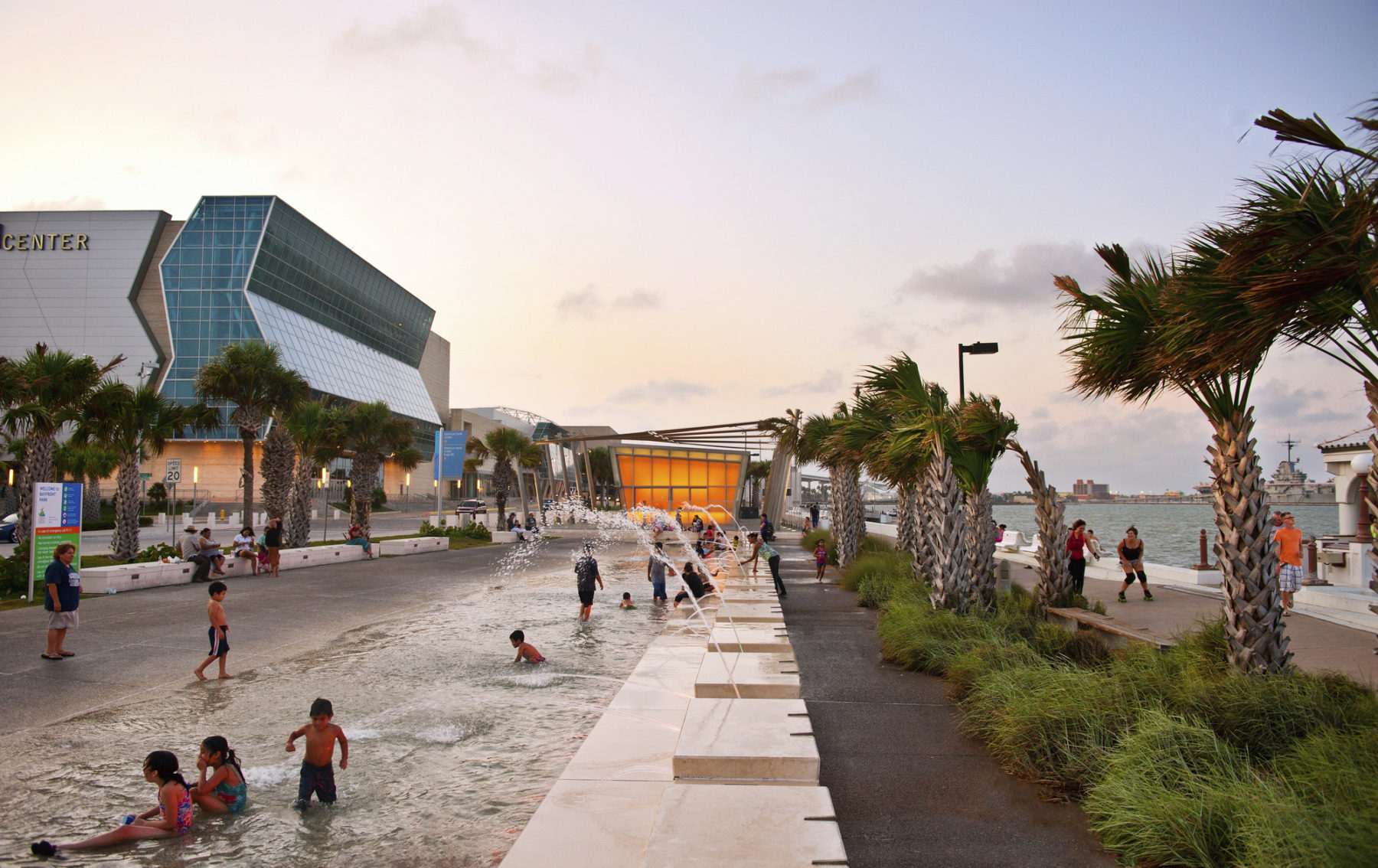
1919年在毁灭性的四级飓风破坏了科珀克里斯蒂市区后,该城市在科珀克里斯蒂湾填海填出一个街区,建造了新的防波堤,保护社区免受未来的灾难。从那时起,海湾滨水区便由沿海大道界定,这条主要为机动车设计的宽阔大道却只为南德克萨斯烈日下的行人提供了非常有限的空间。
2004年,杰尼亚克公司和Sasaki为科珀克里斯蒂海湾滨水区制定了总体规划,从南边的麦克吉海滩跨度到北边的船只河道。审批通过的总体规划提倡搬迁沿海大道,以便沿海滨容纳新的绿色空间,从而创造新的北部海湾滨水公园的远景。北部海湾滨水公园位于美国银行体育中心旁,是总体规划一系列公园中首先施工的公园。
搬迁沿海大道,减少两条车道,并移除80英尺宽的路中绿化带提供海湾滨水土地,为创造北部海湾滨水公园提供了条件。降低交通量、收缩交叉口,并减少车道缩减车辆交通,改善了步行公共领域。北部的海湾滨水公园的设计可以支持节日庆典和大型活动,例如海盗节。在活动期间,沿海大道将封闭交通,为表演、商贩和行人提供空间。
公园的关键要素包括一座吸引儿童和家庭的互动喷泉。家长可坐在附近的公园咖啡厅中,通过挡风玻璃既能挡风又能观看孩子们在喷泉中嬉戏。咖啡厅由撑开于柱子之间的织布材料遮荫,而棕榈树和豆科灌木树逐渐生长起来,将为公园提供众多林荫区。藤架的设计将支持色彩缤纷的攀缘植物,为通向喷泉的步道提供遮荫。藤架面向设计界定的未来餐厅地块,为公园增添活力和开发内容。
公园沿滨水区包括了35英尺高的风力发电机,将产生能源并输回输电网。风力发电机同时也是一种动态艺术形式,其雕塑感的特质源于海螺的外形和色彩,表现了城市独特的海湾环境。风力发电机将作为滨水区标志性的地标,并为公园提供可再生能源。风力发电的引入也通过对潜在危害性大风的利用建立了文化和历史上的联系。
公园位于飓风后建造的防波堤背面的填海材料之上。基地的雨水被引入栽种着本土沿海草地植物的线形雨水花园中,过滤雨洪污染物,让径流渗入地下。沿海的草地提醒着游客大堤建造之前的沿海景观,提供了关于海湾本土景观生态环境的教育。
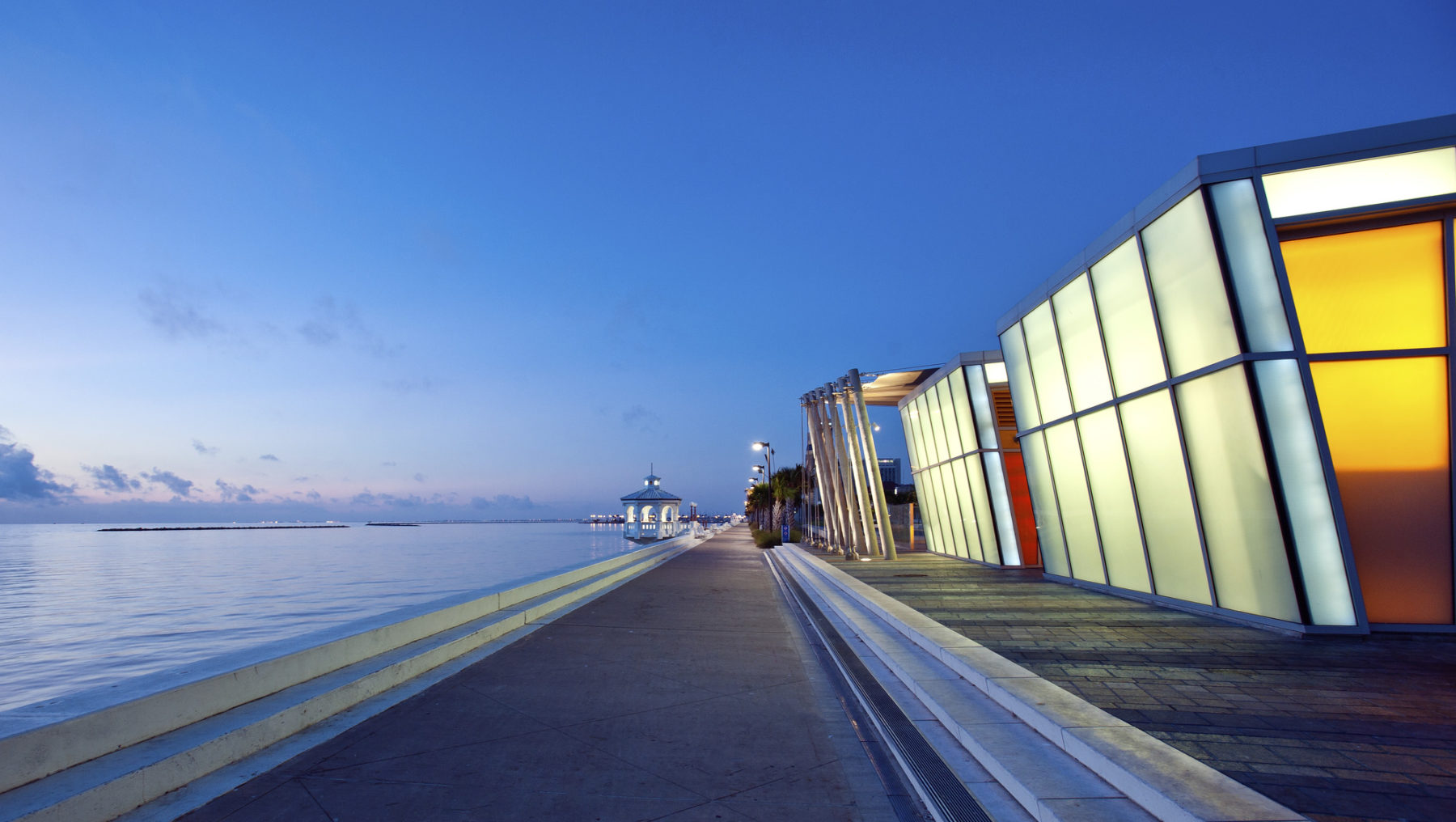
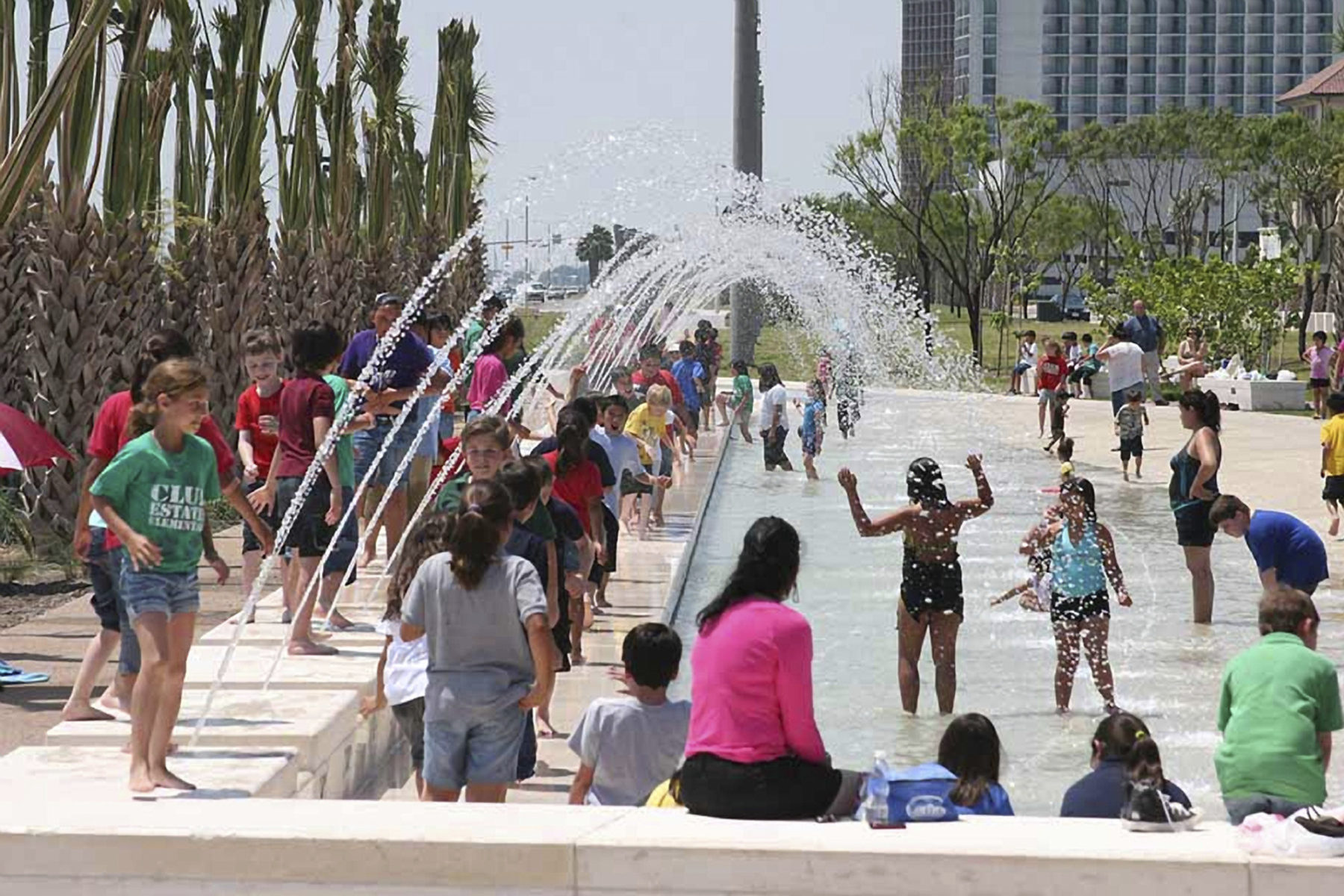
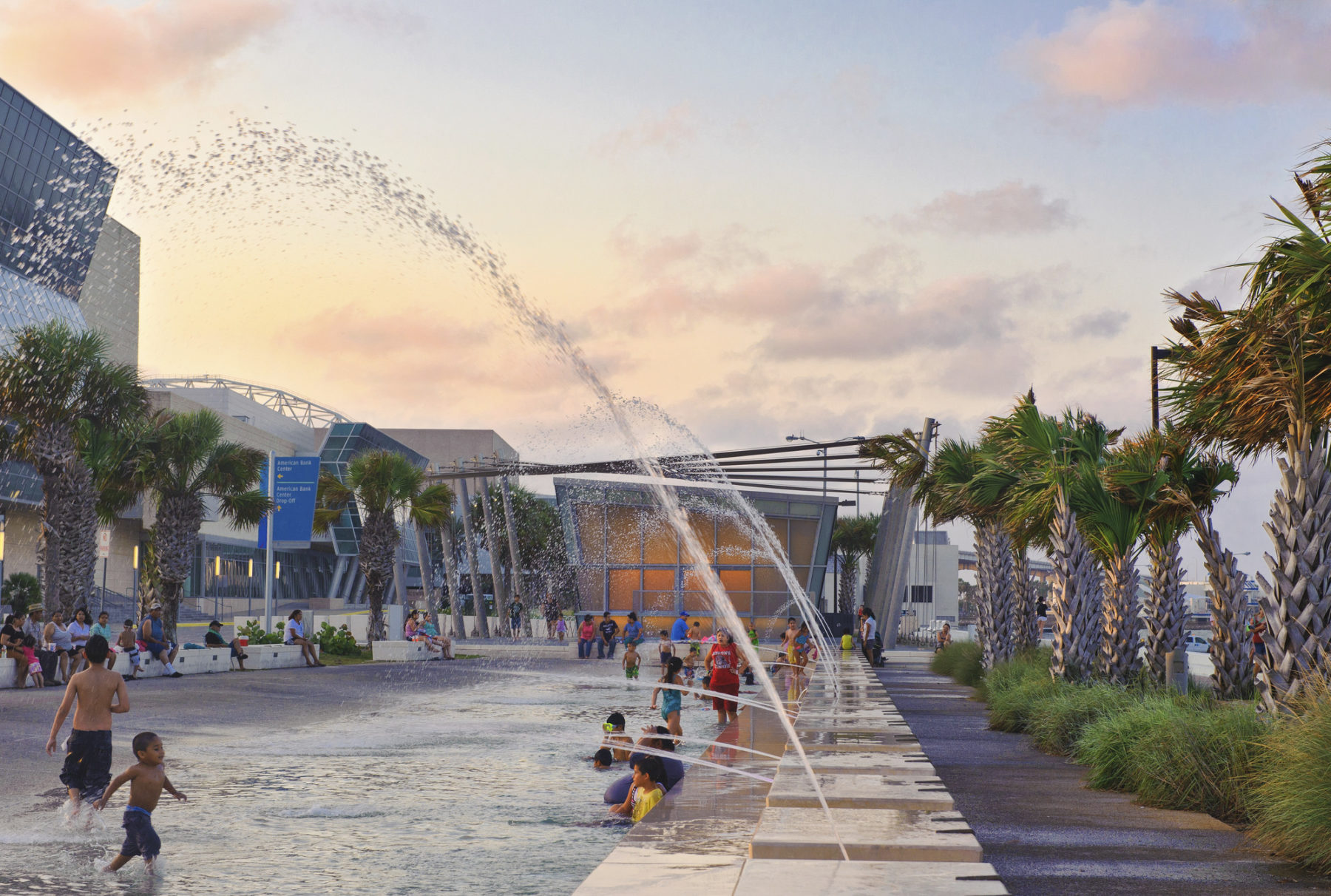
A key feature of the park includes an interactive fountain to attract children and families. Parents can sit at the adjacent café in the park, protected from the wind with glass windscreens, while watching their children play in the fountain. The café is shaded by fabric stretched between posts while groves of palms and mesquite trees will grow over time to provide shady spots in the park. An arbor is designed to support colorful Bougainvillea planting that shade a walkway leading to the fountain. The arbor fronts a parcel identified for a future restaurant included in the design to activate and program the park.
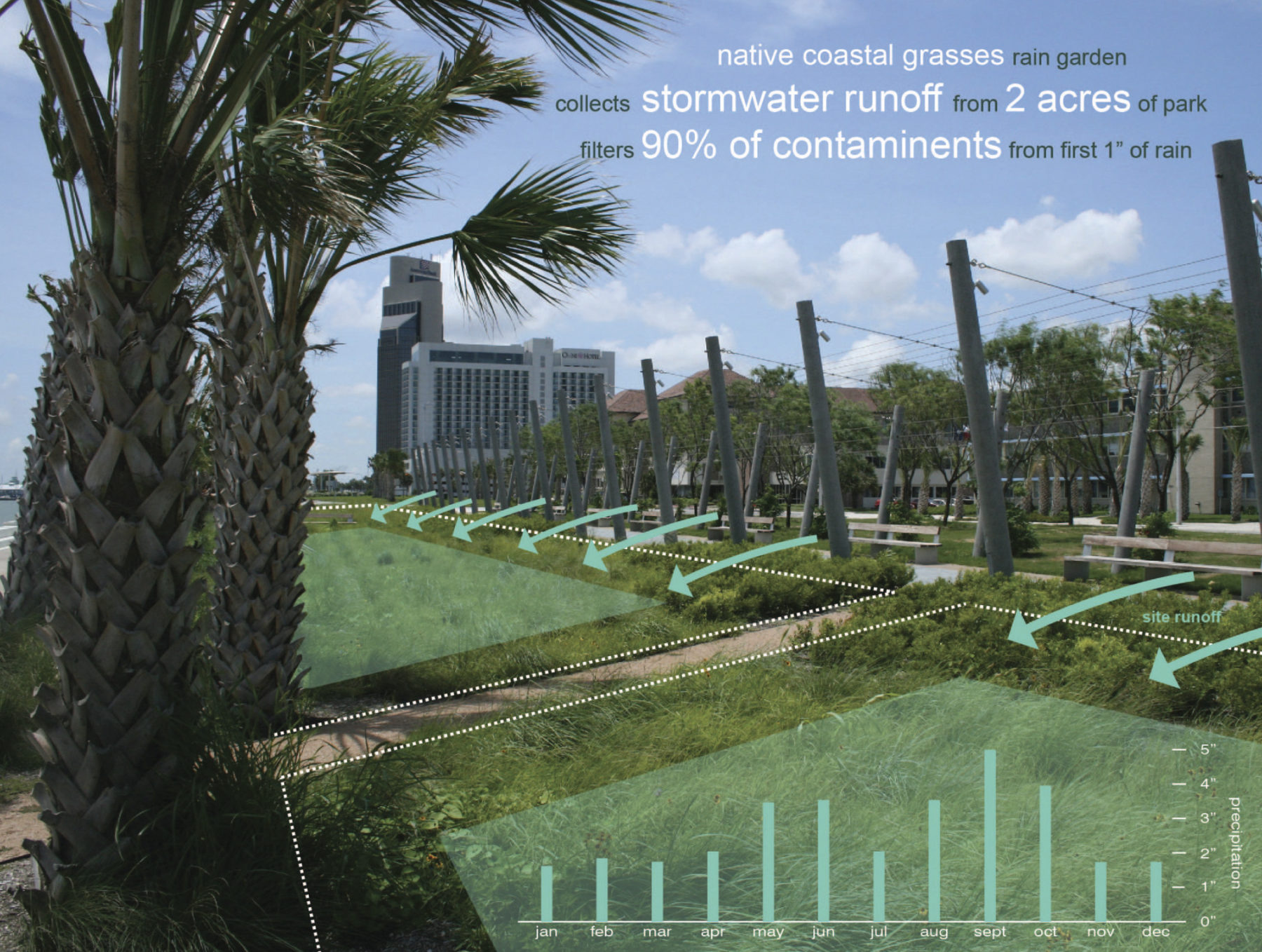
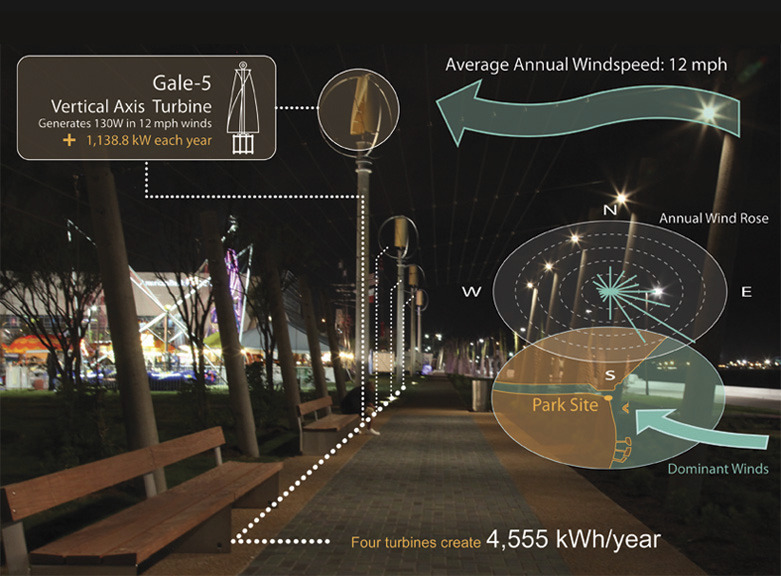
The park includes 35-foot-tall wind turbines along the waterfront that are designed to produce energy that goes back into the grid. The wind turbines are also a form of kinetic art, with sculptural qualities derived from the shape and colors of conch shells that expresses the city’s distinctive setting on the bay. The turbines will serve as iconic landmarks on the waterfront as well as providing renewable energy to the park. The introduction of wind power production also makes a cultural and historical connection by harnessing potentially harmful winds.
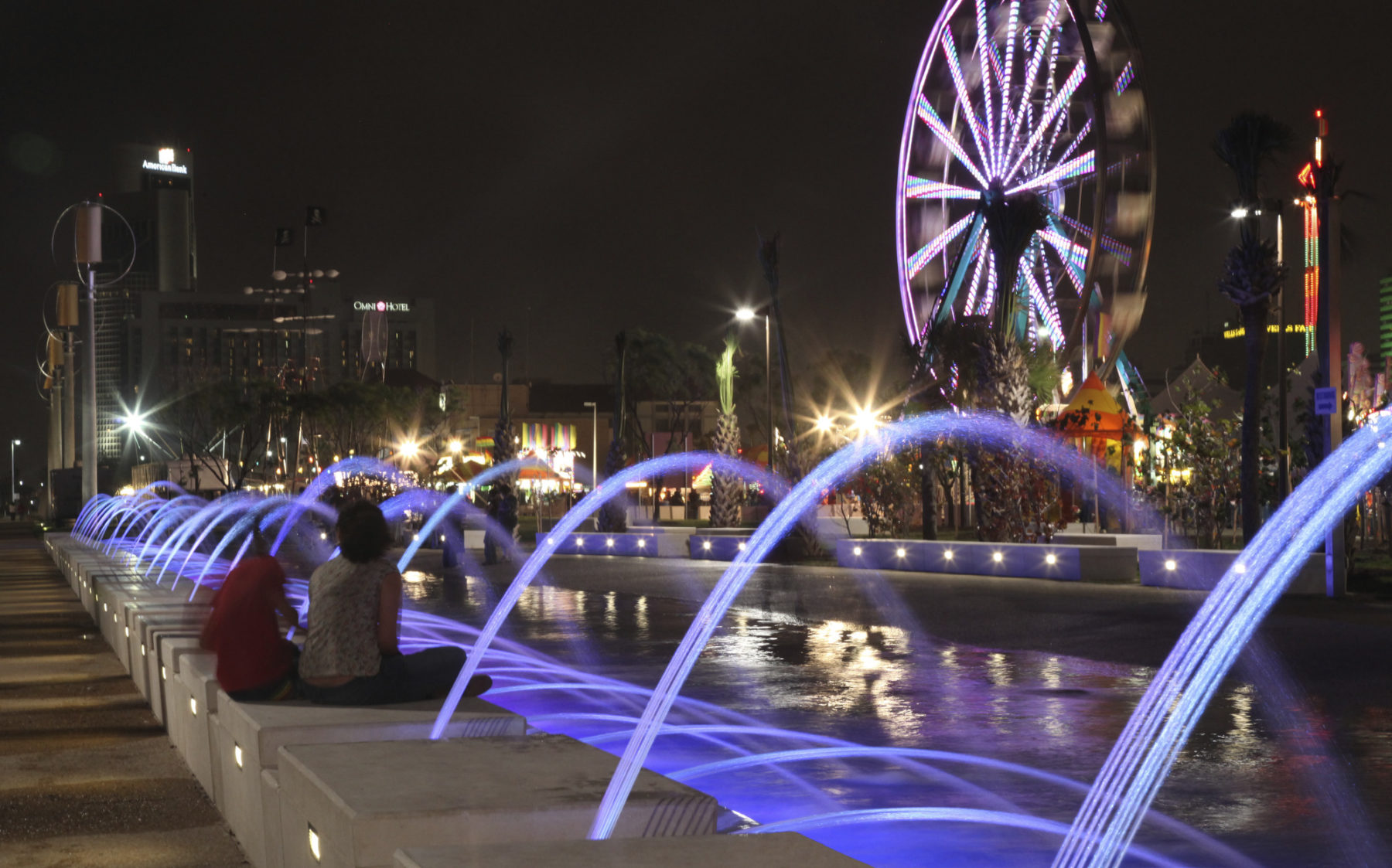
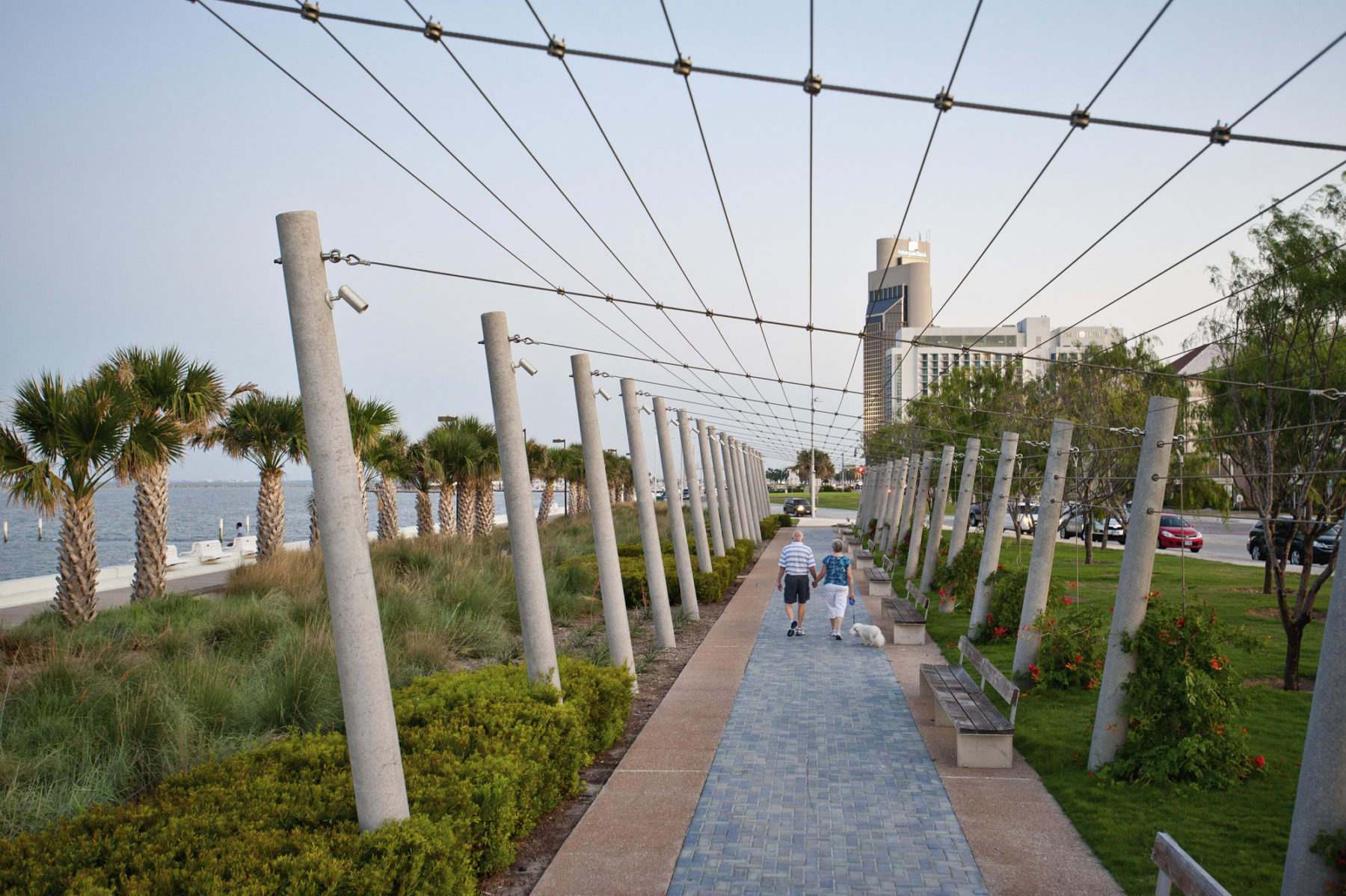
The park is sited atop the fill material behind the seawall constructed after the hurricane. Rainwater from the site is directed to a linear rain garden planted with native coastal meadow plants that filter stormwater contaminants and allows water to infiltrate into the ground. The coastal meadow serves as a reminder to visitors of the coastal landscape prior to the sea wall construction and offers environmental education of the native landscape ecology of the bay.
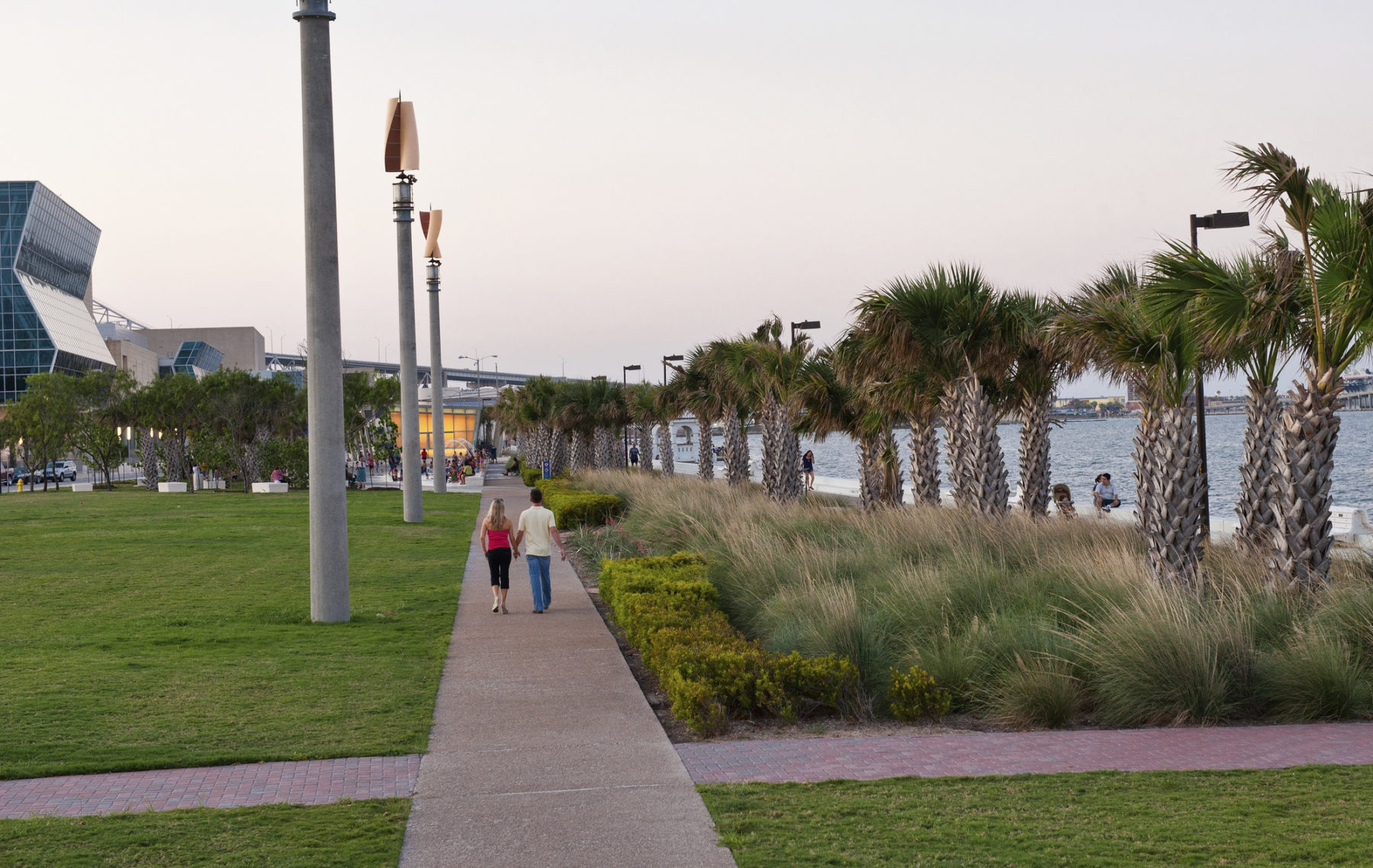
想了解更多项目细节,请联系 Alan Ward.